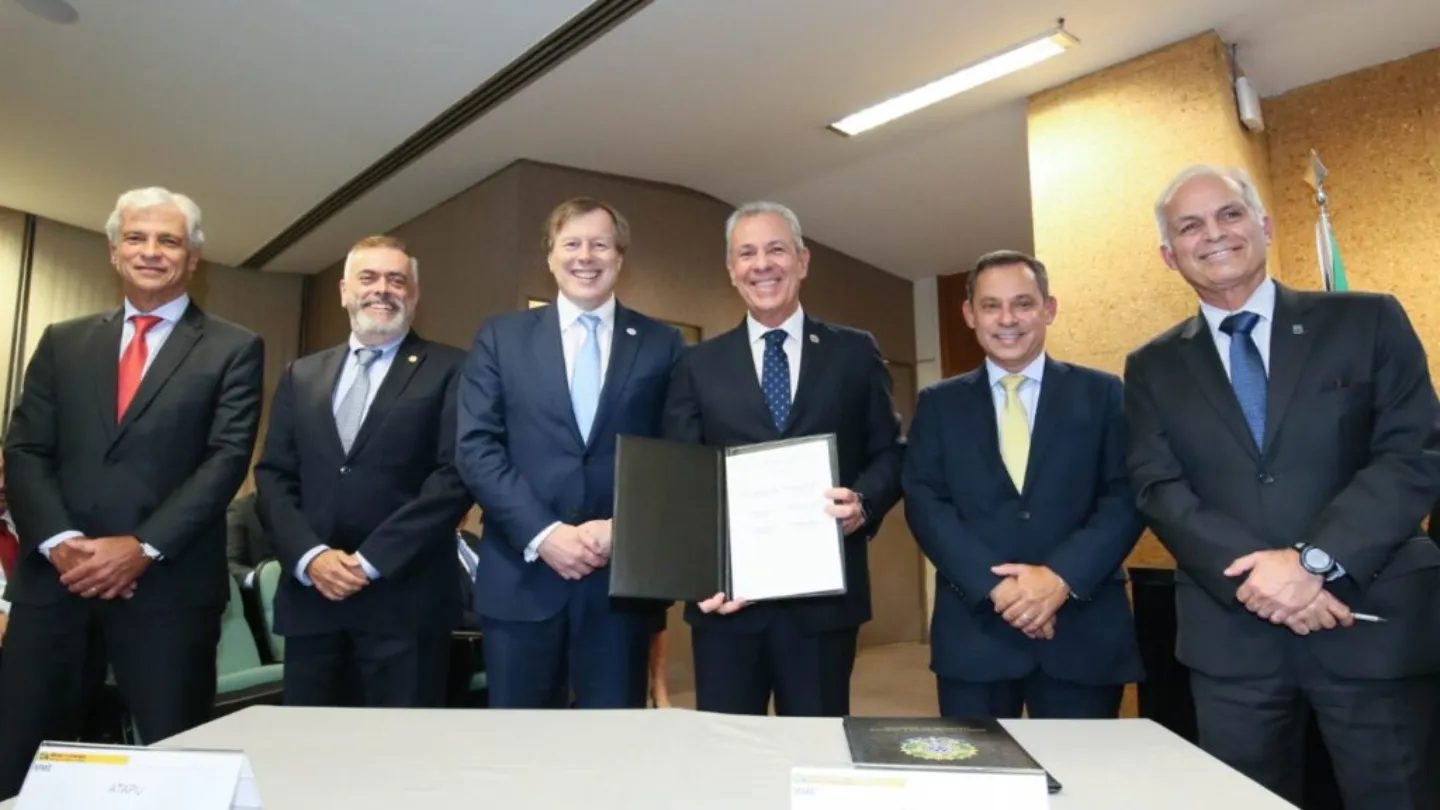The Atapu-2 Project is the second development phase of the Atapu Field which is a pre-salt oil field located in the offshore Santos Basin of Brazil.
An ultra-deepwater project, Atapu-2 is a mixture of a Production Sharing Contract (PSC) (electronic Transfer of Rights, e-TOR 12.4%) and a tax/royalty concession (BMS11A license- 4.3% working interest in the Atapu unit).
Shell owned a 4.3% working interest in the Atapu unit through the BMS11A concession. Additionally, it acquired a 25% interest in the e-TOR, representing a 12.4% working interest in the Atapu unit in 2021.
The Atapu Field was offered for auction in November 2019 by the National Agency for Petroleum, Natural Gas and Biofuels (ANP).
Galp, a parent organisation of Petrogal Brasil, became a partner in the Atapu license under the Unitisation Agreements (UAs) of December 2019.
The license represents 17.03% of the unitised area consisting of BMS11A, TOR, and Open Area. Galp, via Petrogal, holds 1.7% in the project through its 10% interest in the license since December 2019.
Pré-Sal Petróleo (PPSA) entered Atapu in February 2020. PPSA commenced technical assessment on the Atapu deposit in February 2020 and with Petrobras, submitted a technical report of the deposit to ANP in September 2020.
ANP approved PPSA (60.5%) and Petrobras (68.7%) participation in the production sharing of Atapu in February 2021.
The Second Round of Surplus Volumes of the Assignment of Rights was conducted in December 2021.
In 2021, Petrobras, Shell, and TotalEnergies acquired the exploration and production rights in Atapu in volumes exceeding those of the TOR.
The Brazilian Ministry of Mines and Energy (MME) held a ceremony to sign PSCs for the surplus from the TOR in Atapu in April 2022.
A consortium was formed by Petróleo Brasileiro (Petrobras), acquiring the Atapu block. The consortium consisted of Petrobras (operator, 52.5%), Shell Brasil (25%), and TotalEnergies (22.5%).
Atapu-2 will be developed by the Atapu Consortium consisting of Petróleo Brasileiro (Petrobras) (65.7%), Shell Brasil Petroleo (16.7%), TotalEnergies (15%), Petrogal Brasil (1.7%) and PPSA (0.9%).
Petrobras is the operator of the project.
Atapu-2 Location
Atapu-2 will be located offshore Brazil in the eastern part of the Santos Basin. The Atapu Field is located in water depths of around 2,000m.
The Atapu Shared Deposit between Atapu, Oeste de Atapu and the non-contracted area covers 260.5km2 in the central part of the Santos Basin.
The shared deposit lies approximately 0.23km (230m) from Rio de Janeiro municipality. The project FPSO will be deployed approximately 200km offshore of Rio de Janeiro.
Area Geology and Reservoir Details
The shared deposit comprises carbonate rocks from the Barra Velha Formation. The rocks were deposited during the Aptian age belonging to the Guaratiba Group.
The reservoir lies between 2,000m and 2,300m below sea level with a 27 to 28 °American Petroleum Institute (API), a low hydrogen sulphide content, and a high carbon dioxide content.
The reservoirs are highly productive and associated with faults and dissolutions. These reservoirs show great contrasts and complexities in permoporosities.
Atapu Shared Deposit Details
The Atapu Shared Deposit was discovered in May 2013. The FPSO Cidade de São Vicente carried out an early production system (SPA) in 2015 for 190 days and connected to 3-BRSA-1172-RJS well in the field area.
The Atapu Shared Deposit development project (Module 1) or the first development phase of the Atapu Field consisted of 16 wells connected to P-70 FPSO, 8-inch lines, and a 6-inch line.
There are three producers and four injectors (gas/water) in 8-inch lines in a manifold and five producers and 4 satellite injectors in a 6-inch line.
P-70 has a production capacity of 150,000 barrels of oil per day (bopd). The production mechanism is through water injection. A part of the produced gas, rich in carbon dioxide, is reinjected.
Oil is transported by offloading through shuttle tankers with a Dynamic Positioning (DP) system.
A Route 3 Gas Pipeline transports the gas flow from the FPSO. The gas pipeline is a part of the Santos Basin Pre-Salt Pole Integrated Flow System (PPSBS).
Atapu-2 Project Development
The Atapu Consortium made the Final Investment Decision (FID) of the Atapu-2 Project in May 2024.
The project will consist of a newly built FPSO, new wells, a re-routing of the existing wells, and subsea production systems.
This second FPSO (P-84) will have a maximum operational capacity of 225,000 barrels of oil per day (bopd). It will have a gas processing capacity of 10 million cubic metres per day (Sm3/d).
The FPSO will work on electricity and technologies to reduce greenhouse gas emission intensity by 30%.
The technologies include closed flare, cargo oil tank recovery, waste heat recovery, and variable speed drive for pumps and compressors.
The subsea production systems will consist of pre-salt vertical trees, subsea control and distribution systems, subsea distribution units, and pipeline systems.
The project will have 16 wells. Additionally, the four existing wells will be re-routed from the P70 FPSO (Atapu-1). The FPSO is expected to start producing oil from 2029.
Key Contractors
SLB was awarded a major contract by Petrobras to SLB OneSubsea joint venture for the Atapu-2 Project in August 2024.
The contract scope includes the delivery of subsea production systems and related services for the development of the project.
The contract also includes installation and commissioning of the systems and life-of-field services for the project.
The equipment will be manufactured and serviced locally at OneSubsea’s Brazilian facilities.
In May 2024, Petrobras selected Seatrium for the delivery of the P-84 FPSO of the project. The contract is valued at approximately S$11bn ($8.43bn).
The construction of P-84 will start in the First Quarter (Q1) of 2025. It is expected to be delivered in 2029.
FPSO Cidade de São Vicente is owned by BW Offshore.





